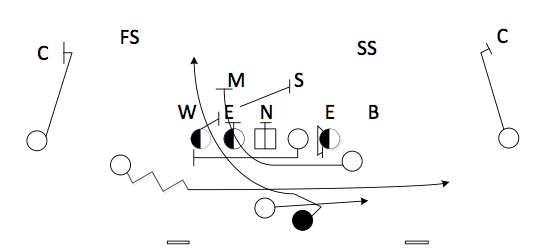Breaking Down Oregon vs. Ohio State: “Every Play Revealed”

Note - I received a complimentary copy of this book for review purposes. Also, the link to the book is an affiliate link and I will be paid a small commission if you purchase it after following the link.
Alex Kirby over at Life After Football asked me if I’d be interested in reviewing his new book Every Play Revealed: Breaking Down Oregon and Ohio State in College Football’s Biggest Game. In his book he breaks down the entire game, play-by-play, including special teams.
Now why would a good ol’ Wing-T coach be interested in reading and reviewing such a book? I’ve got several good reasons:
- I live in Oregon, wanted the Ducks to win the game. I’m an Iowa Hawkeye fan and hate the Buckeyes with the heat of a thousand suns. So while it was painful to review this game, enough time has passed that I could confront those demons.
- As football coaches we should all strive to be students of the game. I figured I could learn something.
- If you watched the second half of the game, you saw Ohio State bring a healthy dose of Wing-T style counters and buck sweep-type plays as they manhandled the Ducks defense. I was dying to see how Alex wrote up those plays and the blocking schemes to see how close the concepts really were to the Wing-T.

Let’s look at a counter play that Ohio State ran in the second half (near the end of the 3rd quarter), in a 1st and goal situation from Oregon’s 10 yard line. Alex writes:
The jet motion gets the safety out of position against the counter play, the Will forces the play back inside, and the backside inside linebacker is completely sealed off from the play. It’s the easiest run all night, and Ohio State ends the scoring drought.

Now, if you aren’t familiar with the classic Wing-T counter play (this is also sometimes called a Counter Trey) head on over and read my recent post about troubleshooting the Wing-T counter.
This is the same play, from a different formation. And like a lot of spread teams, Ohio State uses an H back (also sometimes called a “sniffer”) to play the role that a tight end would play in a more traditional formation. So the play-side players are blocking down (look at the beast #68 left tackle for Ohio State), the back-side guard pulls and kicks out the DE / outside linebacker, and the H back pulls and leads. The jet motion is what makes this a counter play and you can see the Oregon linebackers and secondary flow with the motion.
I have one minor criticism of Alex’s book, and that’s that he didn’t include the yards gained/lost and outcome of each play on his breakdown. He provides down & distance, yard line, hash, and time in the game. I found myself continually jumping to the next play to find down and distance to backwards-compute the result of the play.
So if you are a football nerd like me, this is a great book to use to follow along with some film review. Pretend like you are breaking down the film of your next opponent, pick up this book, head over to Watch ESPN and enjoy the game again from a completely new perspective.